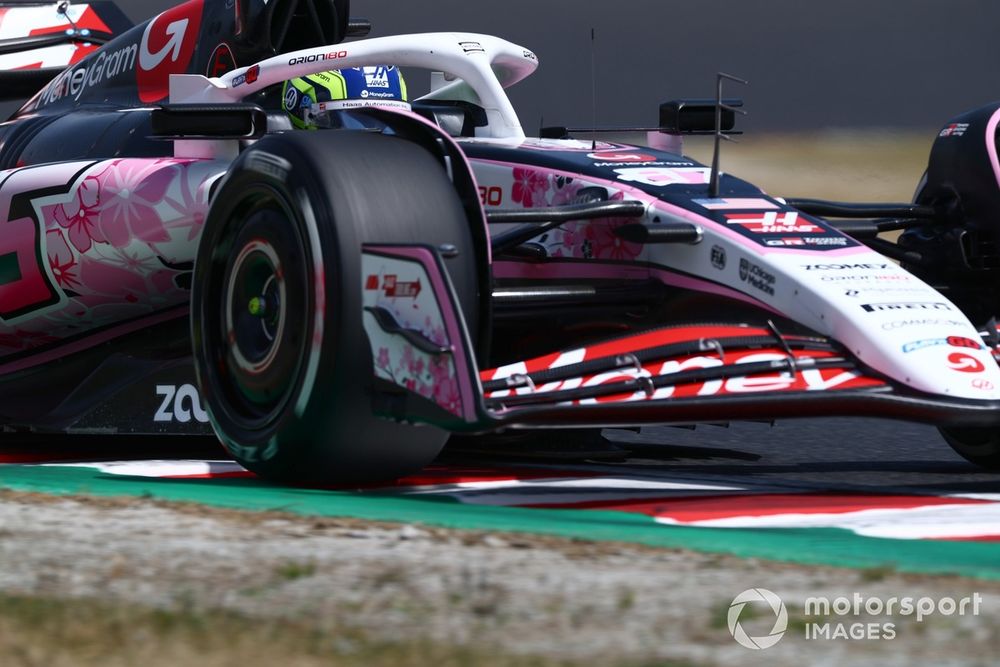When Haas team principal Ayao Komatsu watched his drivers prop up the timesheets in practice for Formula 1’s 2025 season opener in Australia, he admitted to feeling «sick» before turning his attention to fixing the problem.
Haas traced the issue with its VF-25 chassis to instability in higher-speed conditions, exacerbated by Albert Park’s bumpiness at Turns 9 and 10. The team had not been able to see the issue during its testing processes, and thus forced the team into a quick re-think of its car.
Komatsu said that the team went backwards step by step, through the team’s final developments of its VF-24 from last season and through the evolutionary stages of producing this year’s car, to find the culprit for that high-speed instability.
Part of that, he says, was simply due to some of the constraints of aero testing the current cars in the wind tunnel: caution has to be taken with the interface between the rolling road and the car at higher speeds, which meant that it was difficult to truly assess any problems with the floor design.
He theorised that this was a problem that other teams, who had progressed further with their floors relative to Haas, had encountered last year. But with no time to fully analyse the potential fix to the instability within the floor, the team had to press it into service without any wind tunnel testing — Komatsu calling the modifications an «educated guess».
«Simplistically, you cannot run the [current] car on the ground, in the wind tunnel, because you’re going to break the belt — but also, certain conditions, you cannot replicate in the wind tunnel,» Komatsu explained.
Haas’ dismal weekend in Australia forced the team to take a pragmatic approach
Photo by: Sam Bloxham / Motorsport Images
«We have a metric to assess those things, which we thought was good, because last year we didn’t drive into the problem. But many other teams drove into the problem last year because they were a bit ahead of our metric.
«And, until I think you see the problem, you’re not going to know. So the specific issue we had, we just didn’t have the methodology to predict it through CFD and then to assess the wind tunnel result correctly.
«Once we saw the real issue in Melbourne, then we had to literally step back every single thing we’ve done in the development from the end of the VF-24 to the VF-25 and then trying to see ‘OK, let’s say if you draw this threshold here with the metric, it’s OK up until this point’ — but clearly that was wrong.
«So in terms of the metric itself we are looking at, it wasn’t good enough, but also the threshold was too aggressive. So once you understand that one thing, it was how can we then modify the car to reduce that effect, which we did a first step in Suzuka,.
«It was, I wouldn’t say stab in the dark, it was an educated guess, but like I said back then we didn’t have time to wind tunnel test it. We looked at everything, we thought ‘OK, with our best understanding, we think this is the issue’.»
Without modifications, Haas had enjoyed a strong weekend in China beforehand — given the circuit has few high-speed corners and thus did not expose the issue again. Instead, Suzuka’s plethora of higher-speed and higher-load corners was of more immediate concern.

Bearman snared a point at Suzuka to vindicate Haas’ problem-solving approach
Photo by: Zak Mauger / Motorsport Images
When the update arrived, it appeared to alleviate the worst of the team’s concerns; Oliver Bearman finished 10th to denote improved performance across similar circuits. Komatsu says that retrospective testing proved the team’s theories correct.
«We did two things for Suzuka, and then we put that part in the wind tunnel later on retrospectively, and we saw that it improved,» he said.
«It was a hypothesis, but of course until we started running in Suzuka we didn’t know. What I was really pleased about was we were actually right: that the assumption was right, the educated guess was right.
«That gave us confidence that we can keep improving this condition for the next development, which was Imola. It may not have increased our absolute pace that much, but certainly made the car more robust against that kind of condition.
«Then you can really think about putting more performance on the car, which is what you saw in Silverstone.»
In this article
Be the first to know and subscribe for real-time news email updates on these topics
Subscribe to news alerts








